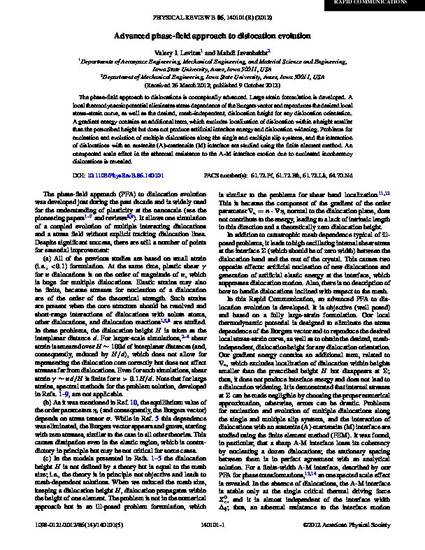
Article
Advanced phase-field approach to dislocation evolution
Physical Review B
Document Type
Article
Disciplines
Publication Date
10-9-2012
DOI
10.1103/PhysRevB.86.140101
Abstract
The phase-field approach to dislocations is conceptually advanced. Large strain formulation is developed. A local thermodynamic potential eliminates stress dependence of the Burgers vector and reproduces the desired local stress-strain curve, as well as the desired, mesh-independent, dislocation height for any dislocation orientation. A gradient energy contains an additional term, which excludes localization of dislocation within a height smaller than the prescribed height but does not produce artificial interface energy and dislocation widening. Problems for nucleation and evolution of multiple dislocations along the single and multiple slip systems, and the interaction of dislocations with an austenite (A)-martensite (M) interface are studied using the finite element method. An unexpected scale effect in the athermal resistance to the A-M interface motion due to nucleated incoherency dislocations is revealed.
Copyright Owner
American Physical Society
Copyright Date
2012
Language
en
File Format
application/pdf
Citation Information
Valery I. Levitas and Mahdi Javanbakht. "Advanced phase-field approach to dislocation evolution" Physical Review B Vol. 86 Iss. 14 (2012) p. 140101(R) Available at: http://works.bepress.com/valery_levitas/11/

This article is from Physical Review B 86 (2012): 140101(R), doi:10.1103/PhysRevB.86.140101.